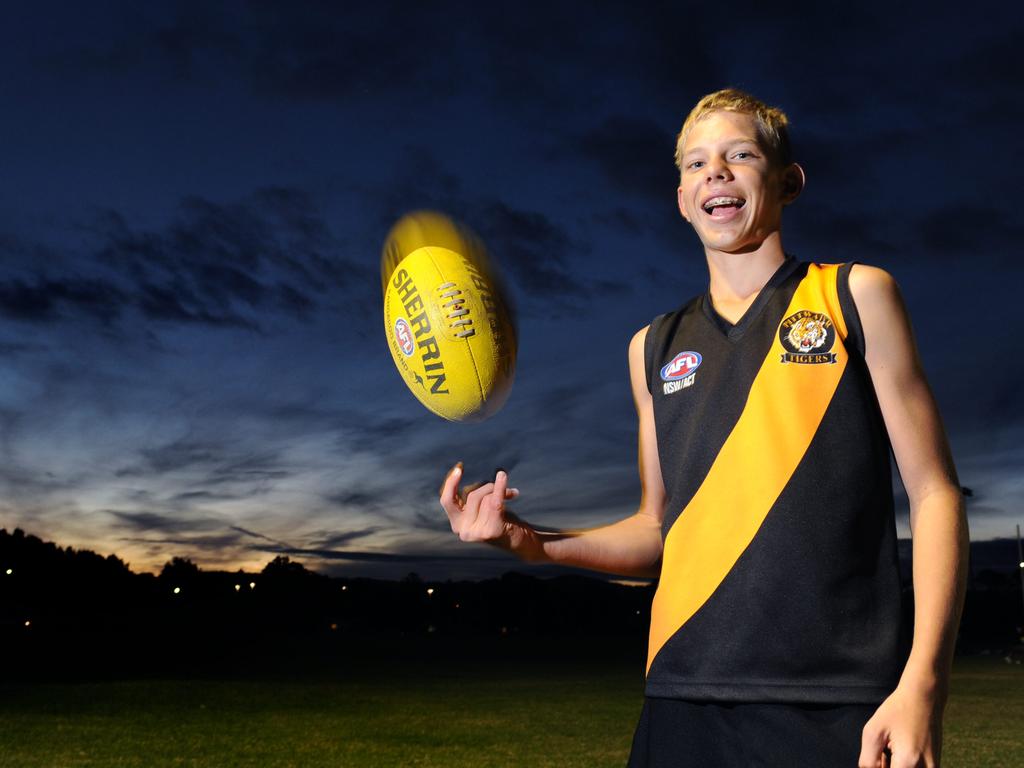Australian Open contenders say the courts this year are faster
Slick. Lively. The balls are flying through the air and zooming off the court. But will this help Ash Barty?

Dual-Wimbledon champion Petra Kvitova chuckled when asked about the speed of the Melbourne Park courts this year.
Slick. Lively. The balls are flying through the air and zooming off the court. And the Czech, a finalist in Melbourne in 2019, appreciates what this might mean for the Australian Open.
Kvitova’s superb left-handed serve and powerful groundstrokes should be well suited to the conditions that unfold during the Australian Open over the next fortnight.
“The courts here? Actually, I can’t complain. I like faster surfaces. Yeah. I like it. It is fast … and the balls are flying as well. All good. All good,” she told The Weekend Australian.
Discussion about the speed of the courts at Melbourne Park is as regular as Christmas. It happens every year. Indeed, it happens around the globe at the majors.
The casual observer might wonder what the fuss is about. The confines of the court do not change on the tour. Each is 23.77 metres long and 8.23 metres wide in singles.
But similarly to a seaming first day pitch in cricket that becomes a spinner’s paradise by the fourth innings, the speed, pace and bounce of a tennis court can change significantly.
Weather, the type of balls in use, the surface itself and the different grades applied to it and even the switch from indoors to outdoors present challenges for players to adjust to.
As world No 1 Ash Barty said after defeating Shelby Rogers 7-5 2-6 (10-4) on Friday, the switch to playing indoors after a match in the sun on Wednesday altered the speed greatly.
Effectively, it blunted the Australian’s vicious top spin shots that jump off the court, with several falling within her American rival’s preferred strike zone.
“When the roof shuts, in here the conditions become quite sterile,” she said.
In a city such as Melbourne which is notorious for having four seasons in one day, the court speed can change by the hour, let alone the day or week.
But the consensus this year is that, by and large, the courts are playing quicker for several reasons, as Barty explained on Wednesday.
“The courts here have always changed, depending on the weather. That’s quite normal,” Barty said.
“When you get a warmer day, the heat stays in the court a little bit longer and, with the balls this year, it’s quite lively, quite bouncy off the court.
“But at night it can slow down as well. It’s more how the balls and the courts react to the weather as opposed to the surface itself.
“But I think they are playing a little bit quicker this year and I think just with the amount of play that they’ve had the last two, three weeks and what they’re going to get over the next three weeks is going to quicken them up even more.”
There is no doubt the Melbourne Park courts have seen far more action than usual leading into the Australian Open.
The site is usually busy the week before the major.
Qualifying matches are played on the outdoor courts while the biggest stars in the sport prepare on the three roofed stadium courts.
But this year the onslaught happened far earlier with the Australian summer delayed.
Australians were training at Melbourne Park throughout January. When the quarantined cohort arrived in the middle of last month, the Aussies shifted to Kooyong and Xavier College and Melbourne Park became home to the visitors.
The volume of play on the courts over the past week has been remarkable as six different tournaments continue at Melbourne Park.
While practising, John Millman said the balls felt different this year and were livelier.
In terms of players suited to slicker courts, traditionally the bigger servers have tended to fare well as it makes it harder for rivals to break their serves.
But supreme defenders such as Novak Djokovic, who has remarkable agility, can counter this with their ability to reel in their rivals aggressive shots.








To join the conversation, please log in. Don't have an account? Register
Join the conversation, you are commenting as Logout